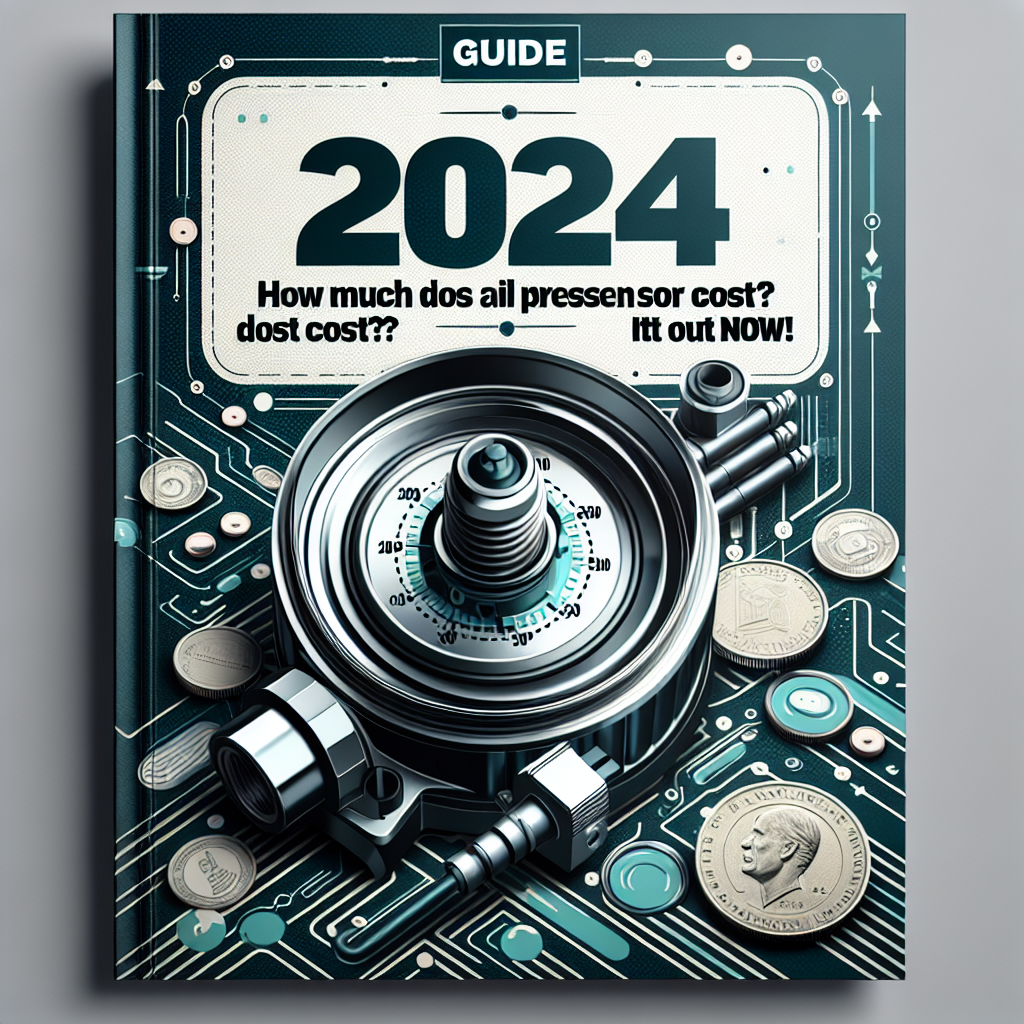
Understanding the functioning of your vehicle’s oil pressure sensor is crucial for maintaining your car’s health. Having stressed over fluctuating oil pressure readings myself, I know firsthand just how important this component is. This comprehensive guide is aimed at helping you get a grasp of the oil pressure sensor, its costs, where to buy one, and much more.
What is an Oil Pressure Sensor?
An oil pressure sensor is a crucial part of your vehicle’s engine management system. It monitors the oil pressure and sends data to your car’s computer. If the oil pressure drops below a certain level, it triggers a warning light on your dashboard. This small yet significant component can save your engine from severe damage by alerting you to potential issues.
Why is the Oil Pressure Sensor Important?
Having dealt with multiple car breakdowns in my years of car ownership, I can assert that ignoring the oil pressure sensor is a recipe for disaster. The sensor ensures that the oil is circulating correctly, lubricating the engine components to prevent overheating and excessive wear. Without it, you’re driving blindfolded to potential engine problems that can escalate quickly.
How to Identify a Faulty Oil Pressure Sensor
Knowing when your oil pressure sensor is failing can save you a lot of headaches. If you notice an oil pressure warning light on your dashboard, erratic oil pressure readings, or unusual sounds from your engine, it might be time to inspect the sensor. A quick visit to the mechanic for a diagnostic test can save you a lot of trouble in the long run.
Factors Influencing Oil Pressure Sensor Costs
Brand
While shopping for an oil pressure sensor, you’ll come across various brands. Renowned brands often come with a higher price tag, but they offer reliability and longevity. Cheaper alternatives might seem tempting but can lead to frequent replacements and potential engine damage.
Make and Model of Your Car
The make and model of your vehicle play a significant role in determining the cost of the oil pressure sensor. Luxury cars usually have more expensive sensors, whereas common makes like Toyota or Ford tend to have more affordable options.
Labor Costs
Typically, the cost of the sensor itself ranges between $20 and $100. However, labor costs can add another $50 to $200, depending on your location and the complexity of the installation.
Where to Buy Oil Pressure Sensors?
Online Retailers
Websites like Amazon, eBay, and RockAuto offer a variety of oil pressure sensors. You can compare prices and read reviews to make an informed decision. I’ve often found good deals on these platforms, along with customer reviews that add an extra layer of confidence in your purchase.
Auto Parts Stores
Home-grown auto parts stores like AutoZone or Advance Auto Parts can be a lifesaver. The benefits of brick-and-mortar stores include assistance from knowledgeable staff who can guide you to the best choice for your vehicle. They also typically offer a quicker return process, should you need it.
DIY vs. Professional Installation
DIY Installation
For the adventurous, installing an oil pressure sensor yourself can save money on labor costs. However, it requires some mechanical know-how and the right set of tools. Online tutorials and forums can be valuable resources for DIY enthusiasts.
Professional Installation
Given the intricacies of modern-day vehicles, sometimes it’s best to leave the job to the professionals. Mechanics have the expertise to ensure the sensor is installed correctly, reducing the risk of future issues.
Warranty and Return Policies
When purchasing an oil pressure sensor, don’t overlook warranty and return policies. Brands often provide a warranty, ranging from one year to a lifetime. This can be a lifesaver in case the sensor malfunctions within the warranty period.
How to Maintain Your Oil Pressure Sensor
Regular maintenance can extend the lifespan of your oil pressure sensor. This includes routine oil changes, keeping an eye on oil levels, and regular checks by a professional mechanic. I’ve learned that consistency in maintenance can significantly reduce unexpected breakdowns.
Comparing Different Oil Pressure Sensors
To make an informed decision, it’s essential to compare different oil pressure sensors based on their features, durability, and price. Here’s a table to help you with a quick comparison:
| Brand | Functionality | Durability | Price Range |
|---|---|---|---|
| Bosch | Highly accurate readings | High | $30-$100 |
| ACDelco | OEM quality | Medium | $20-$80 |
| Dorman | Budget-friendly | Medium | $15-$40 |
Frequently Asked Questions (FAQs)
Q1: How often should I replace my oil pressure sensor?
Oil pressure sensors don’t have a set lifespan. However, after driving 100,000 miles or experiencing any symptoms of failure, it’s wise to have it checked and replaced if necessary.
Q2: Can I drive with a faulty oil pressure sensor?
Driving with a faulty oil pressure sensor is not advisable. It prevents you from monitoring the oil pressure effectively, risking severe engine damage.
Q3: Are aftermarket oil pressure sensors reliable?
Many aftermarket sensors are reliable and cost-effective. However, always read reviews and check the warranty before making a purchase.
Q4: Is it normal for the oil pressure warning light to turn on briefly during start-up?
Yes, it’s normal for the oil pressure warning light to turn on during start-up. It should turn off within a few seconds. If it stays on, there might be an issue with your oil pressure sensor or oil levels.
In summary, maintaining your oil pressure sensor is akin to keeping a vigilant eye on your engine’s health. From identifying a faulty sensor to deciding where to purchase and whether to DIY or seek professional help, this guide has covered all bases. Stay alert, and you’ll significantly extend the life of your vehicle’s engine, saving time and money in the long run.